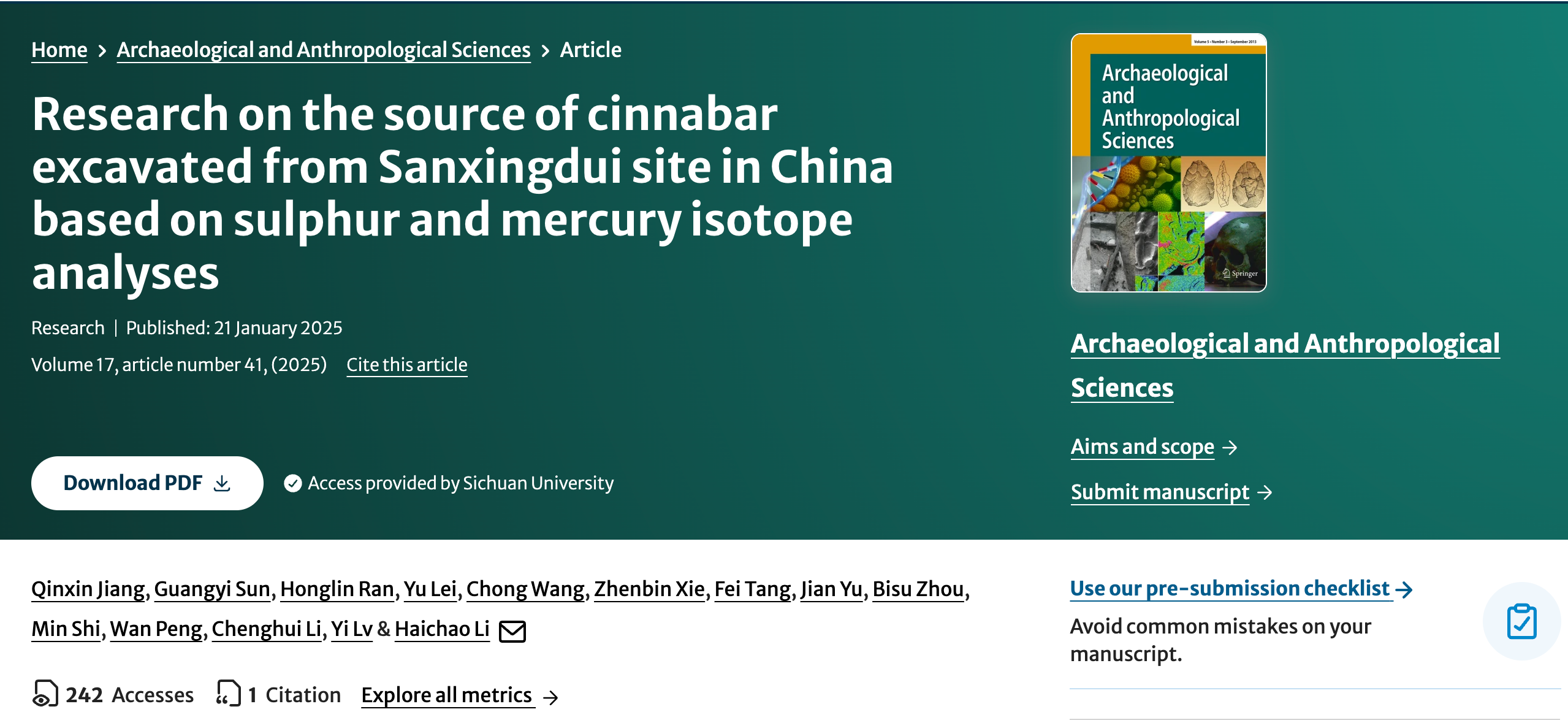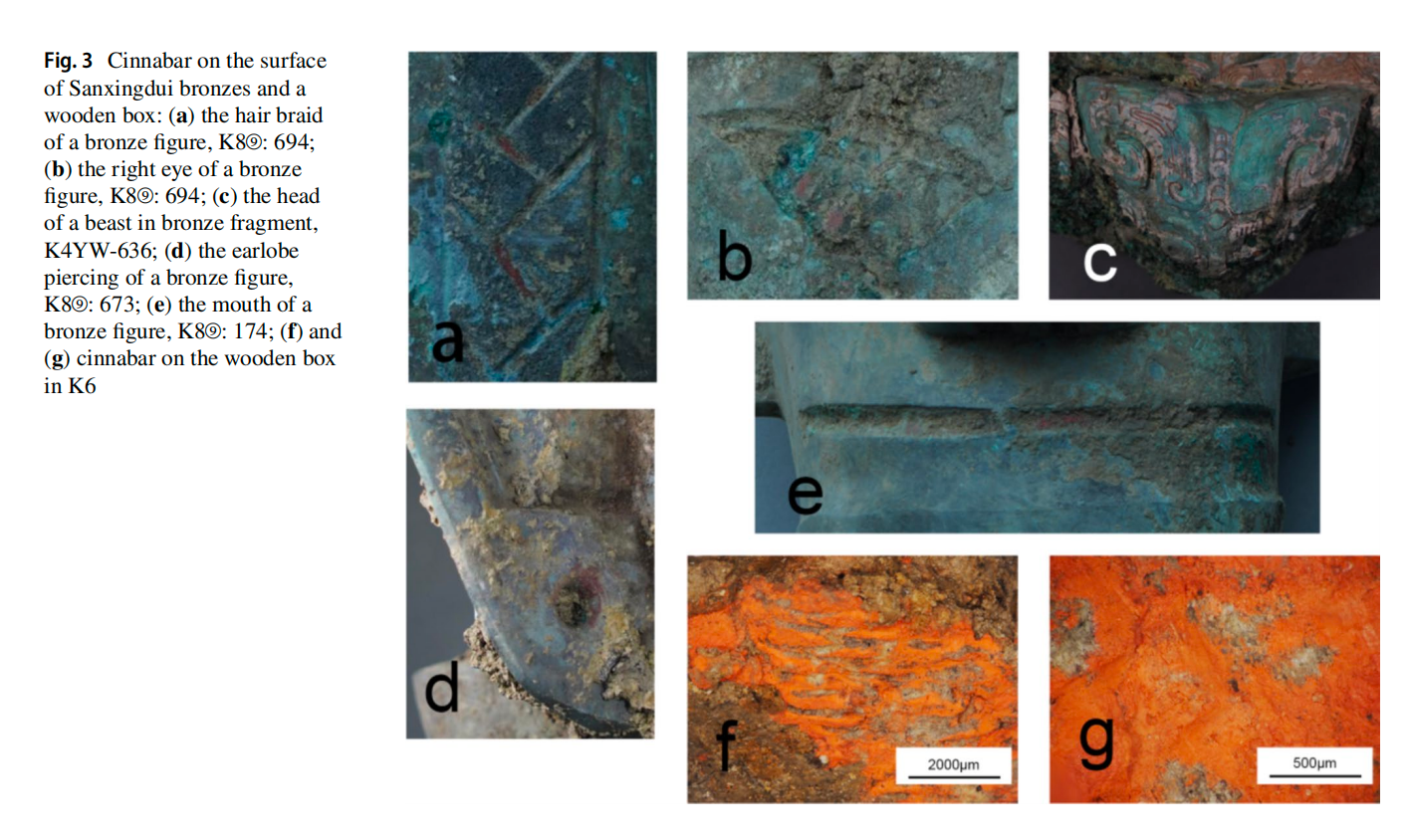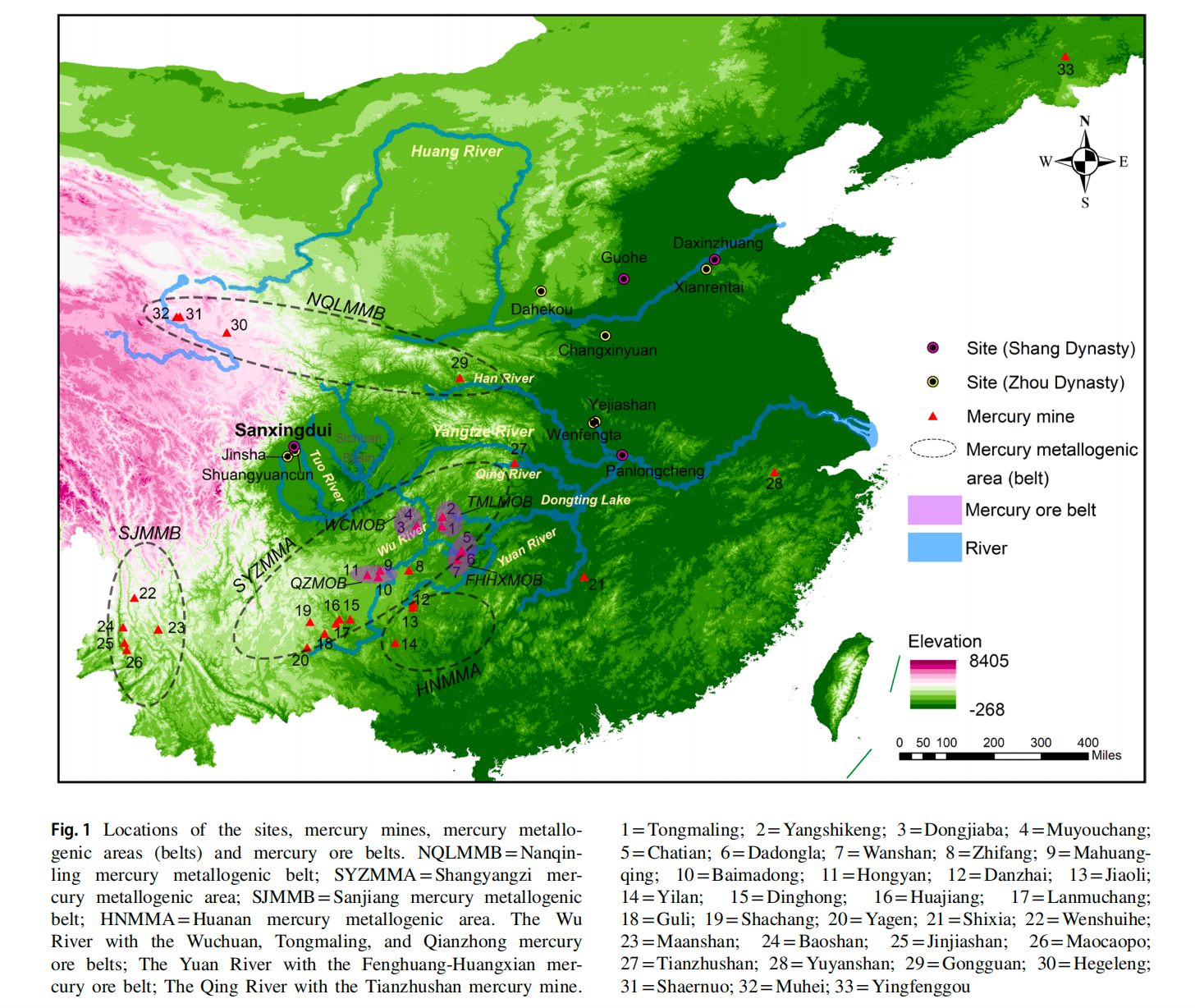Sichuan University's Center for Archaeological Science, in collaboration with multiple institutions, publishes new findings on the origin of cinnabar at Sanxingdui
Recently, the Center for Archaeological Science of Sichuan University, in collaboration with the Sichuan Provincial Cultural Relics and Archaeology Research Institute and other institutions, published a paper titled "Research on the source of cinnabar excavated from Sanxingdui site in China based on sulphur and mercury isotope analyses" in the international journal *Archaeological and Anthropological Sciences*. This study systematically explores the source of cinnabar excavated from the Sanxingdui site through sulfur and mercury isotope analysis combined with archaeological and documentary materials, providing new scientific evidence for revealing the resource network and regional exchanges of the Sanxingdui civilization. Jiang Qinxin, a master's student at the School of Archaeology and Museology, Sichuan University, is the first author of the paper, and Professor Li Haichao is the corresponding author. This article was funded by the National Social Science Fund of China Major Project "Research on Sanxingdui Culture and Chinese Civilization" and is a phased achievement of Professor Li Haichao's research group on the resource, technology, and cultural interaction network of Sanxingdui.


The resource network of the Sanxingdui civilization was extensive and rich in content, involving precious resources such as bronze, jade, ivory, cowrie shells, and so on. Cinnabar, also a precious resource, was widely used at Sanxingdui, but Sichuan lacks concentrated mercury ore belts, making the source of cinnabar an urgent issue to be resolved. The research group investigated the source of Sanxingdui cinnabar based on sulfur and mercury isotope analysis, combined with archaeological materials and documentary evidence.
The research group systematically collected cinnabar samples from the surfaces of bronze wares and other artifacts excavated from Sanxingdui and conducted sulfur and mercury isotope analysis. Through data comparison, it was confirmed that this cinnabar primarily originated from the Upper Yangtze Metallogenic Belt, particularly closely related to the mercury mines in the Wujiang River Basin and Yuanjiang River Basin, with the Qingjiang River Basin being less likely. Cinnabar was transported through the Yangtze River waterway via the Three Gorges into the Chengdu Plain. With the transition from the Shang to the Zhou Dynasty, the source of Sanxingdui's cinnabar shifted from coexistence of the Wujiang and Yuanjiang River Basins to primarily the Wujiang River Basin, reflecting changes in the Sanxingdui resource network.

Archaeological materials and documentary records further corroborate this scientific inference. During the Shang and Zhou periods, there were close cultural exchanges between the Wujiang, Yuanjiang, and Qingjiang River Basins and the Chengdu Plain. At the same time, documents such as the *Records of the Grand Historian* (Shiji) and the *Lost Book of Zhou* (Yizhoushu) also record the history of long-term cinnabar mining and tribute by the ancient Pu and Ba peoples. The article also compared the isotopic data of cinnabar from Sanxingdui with other important sites of the Shang and Zhou periods from a macro perspective, suggesting that the Upper Yangtze Metallogenic Belt might have been an important center for cinnabar supply during the Shang and Zhou periods. The circulation of cinnabar likely followed two main patterns: the Central Plains dynasties controlled the cinnabar from the Upper Yangtze Metallogenic Belt and granted it to local nobles. Simultaneously, independent exchanges also existed between various regions and the Upper Yangtze Metallogenic Belt. This research not only fills the academic gap regarding the source of Sanxingdui cinnabar but also provides new clues for understanding the Sanxingdui resource network and cultural interaction. Next, the research group will further investigate the sources and changes of cinnabar in the ancient Shu region, and deeply reveal the archaeological significance of cinnabar from perspectives such as function, hierarchy, and ethnicity.
Author: Jiang Qinxin
Reviewed by: Li Haichao
